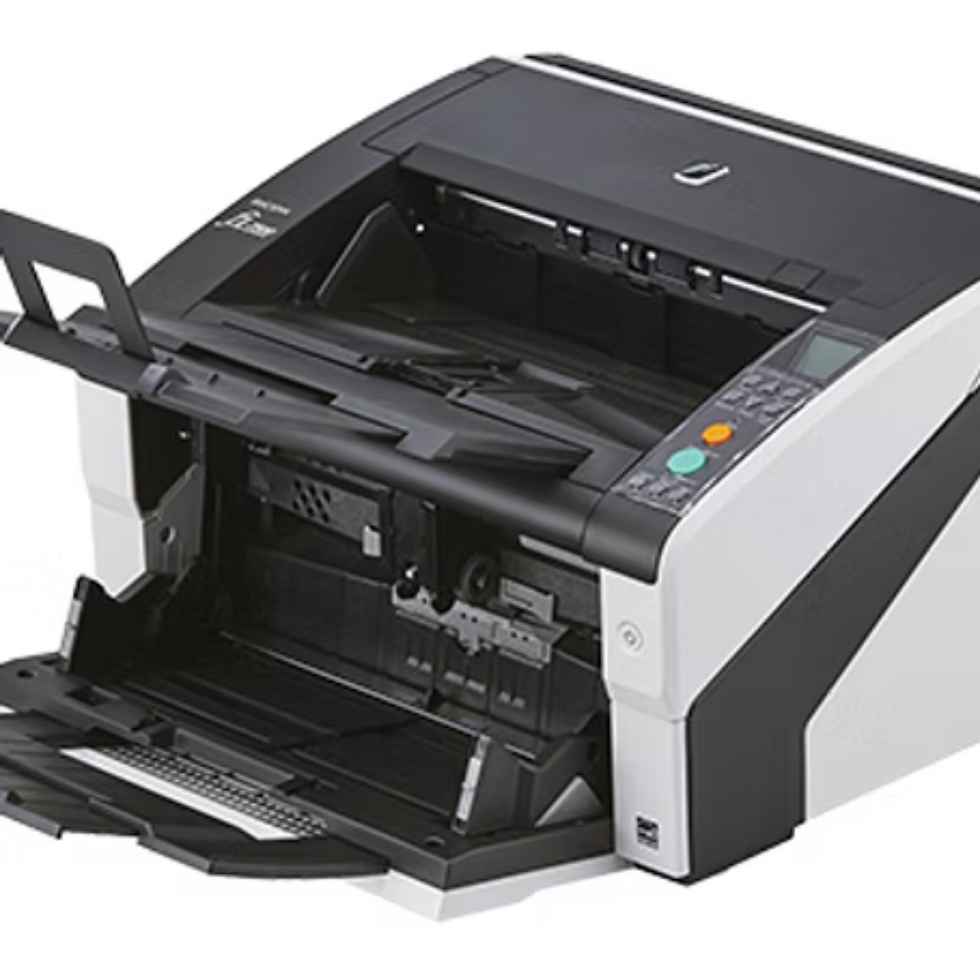Beyond the Scanner: 3 Document Workflows You Can Automate to Save Thousands of Hours
- Gregory Guarisco
- Aug 8
- 3 min read
For most businesses, the multifunction printer is seen as a simple utility: it prints, it copies, and it creates digital images of paper documents. But to view it as just a scanner is to miss its most powerful capability. Your modern office device is a dormant automation engine, waiting to be activated.

By moving beyond simple "scan-to-email" or "scan-to-folder," you can re-engineer core business processes, eliminating manual steps, reducing errors, and saving thousands of hours in administrative time each year. This is the power of document workflow automation, and it starts right at the scanner.
Here are three common, time-consuming workflows you can automate today.
1. The Workflow: Accounts Payable (Invoice Processing)
The Old Way: An invoice arrives. It’s manually scanned and emailed to a manager. It sits in their inbox. Eventually, they approve and forward it to accounting. Someone in accounting then manually keys the vendor name, invoice number, date, and amount into QuickBooks or other software. The process is slow, opaque, and prone to error.
The Automated Way: You create a dedicated "Scan for AP" button on your copier's screen. An employee places an invoice on the scanner and presses the button. The system uses Optical Character Recognition (OCR) to read the key data from the page. It then automatically routes the digital invoice and its extracted data to the correct manager for approval. Once they click "approve," the data can be automatically pushed into your accounting software.
The Result: Drastically reduced data entry, faster approvals, fewer errors, and a clear audit trail of every step.
2. The Workflow: Human Resources (New Hire Onboarding)
The Old Way: A new hire fills out a thick packet of paper forms (W-4, I-9, direct deposit, etc.). An HR team member then sits at the scanner, feeding each document through one by one, manually naming each file (JohnSmith_W4.pdf, JohnSmith_I9.pdf), and saving it to a folder. This can take 30 minutes or more per new hire.
The Automated Way: The HR employee places the entire onboarding packet in the document feeder and presses a "New Hire Onboarding" button. The system can be configured to recognize blank pages or barcodes placed between forms. It automatically separates the packet into individual, properly named documents and files them in a secure, pre-designated folder for that new employee.
The Result: A 30-minute task is reduced to 30 seconds, HR data is secured instantly, and compliance is simplified.
3. The Workflow: Sales & Legal (Contract Management)
The Old Way: A client signs a contract. A sales rep scans it and emails it to their manager, the legal department, and maybe accounting. It's difficult to track if everyone has seen the final, executed version. The document lives in multiple inboxes, creating version control confusion.
The Automated Way: The sales rep scans the signed contract using a "Scan Executed Contract" button. The workflow is pre-built: a copy is automatically sent to the client for their records, an alert is sent to the legal and accounting departments, and the master copy is filed in a central, secure repository like SharePoint or Google Drive.
The Result: Instantaneous distribution, a single source of truth for all contracts, and an automated start to the project kickoff or invoicing process.
Your Scanner is Smarter Than You Think
These are just three examples of how modern office technology can revolutionize your business processes. The key is to stop thinking of your device as just a scanner and start seeing it as the gateway to your entire digital workflow.
At Classic Business Products, we specialize in analyzing these processes and building custom workflows that fit your exact needs. Contact us for a complimentary workflow assessment and discover how much time you could be saving.




Comments